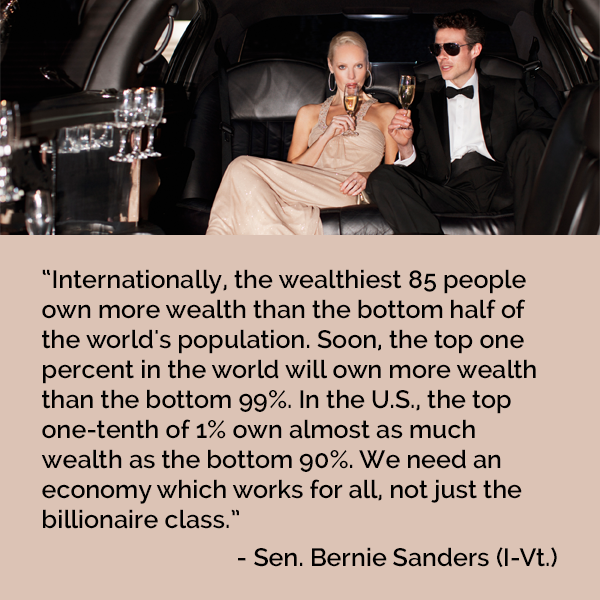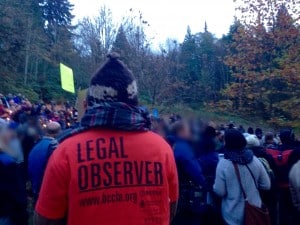short URL: wp.me/p5JJK8-y3

Waterloo Region Record (TheRecord.com) staff writer Paige Desmond reports:
“Region of Waterloo councillors vote Wednesday (4 March 2015) to approve the 2015 budget and set the spending tone for this term of council. The last term of council hiked taxes 8.9 per cent and this council is expected to start things off with a 2.5 per cent increase—above the 2.4 per cent rate of inflation for 2014. That would add about $44.68 to the property tax bill on a home assessed at $291,000. ‘It’s a big operation. There’s a lot going on at the region, so that’s well within our guidelines and I think we’re in a good shape,’ Councillor Geoff Lorentz said. Top fiscal pressures include debt servicing [i.e. paying a high compounded interest, usury, on the debt to private commercial banks], rapid transit and staff compensation, though more debate is expected on requests from staff, community organizations and councillors, Lorentz said. Council voted to hike water and waste water rates by 4.9 per cent and 7.9 per cent respectively in February, staying on track with a plan to increase water rates up to 45 per cent over 10 years. The $3.6 billion, 10-year capital budget includes $1.2 billion for water and waste water, $899 million for roads and $857 million for transit.”
2015 Budget Overview — Region of Waterloo 2015 Budget
The Region of Waterloo’s debt is fast approaching $700 million, and is rapidly growing as you read this. Debt servicing (i.e. paying a high compounded interest (usury) on the debt to a private commercial bank) will cost the region about $62 million this year. Of that, about $48 million will come from taxpayers. And where will the remaining $14 million in interest payments come from? The City of Toronto, with its budget of approx. 11.5 Billion, has a budget deficit of about 86 million to deal with. And then, on the top of the interest, there are huge bank fees. A 2013 study found that the city of Los Angeles spends over $200 million annually on bank fees – more than its budget to maintain its extensive streets and highways!
Gar Alperovitz most recent publication is “What Then Must We Do? Straight Talk About the Next American Revolution”. Gar Alperovitz speaks directly to the reader about why the time is right for a revolutionary new economy movement, what it means to democratize the ownership of wealth, what it will take to build a new system to replace the decaying one—and how to strengthen our communities through cooperatives, worker-owned companies, neighborhood corporations, small and medium-size independent businesses, and publicly-owned banks. For the growing group of citizens pacing at the edge of confidence in the old system, or already among its detractors, What Then Must We Do? offers a revolutionary, common-sense solution for moving from despair and anger to strategy and action. Alperovitz is the former Lionel R. Bauman Professor of Political Economy at the University of Maryland and co-founder of the Democracy Collaborative:
 “Recognition is growing of the undue influence that private corporate finance — tied to Wall Street rather than anchored in Main Street — has on our communities. Most people understand that regulation can only go so far and that it has a tendency to unravel in the face of corporate pressure — as the recent successful efforts by Citigroup to roll back key provisions of the Dodd-Frank legislation amply demonstrate. Again, starting at the local level, public banking seek to transform the current system toward one in which banking is managed as a public utility rather than a global casino where taxpayers pick up the tab for private losses. Public banking campaigns in several areas seek to make sure that state and city deposits are deployed not to pad the margins of Wall Street managers but rather to benefit local communities. Santa Fe Mayor Javier Gonzales, for instance, recently announced that the city was studying the creation of a public bank, noting that its existing provider of financial services, Wells Fargo, “takes city revenues, taxpayer dollars and invests those dollars for its own profit as part of a loan portfolio for folks outside of Santa Fe and New Mexico.” In late January 2014, the Santa Fe City Council approved a $50,000 contract with a local firm to investigate setting up such a bank. Early in 2014, residents in more than 20 Vermont town meetings voted in favor of a proposal to turn the Vermont Economic Development Authority into a state bank. Ultimately, the effort accepted a compromise in the state legislature, with the authorization of up to 10 percent of state cash balance (currently totaling around $350 million) being made available for investment in local enterprise — more or less fulfilling what would have been one of a state bank’s most important functions. The state of North Dakota, of course, has operated a highly successful publicly owned bank for almost a century.”
“Recognition is growing of the undue influence that private corporate finance — tied to Wall Street rather than anchored in Main Street — has on our communities. Most people understand that regulation can only go so far and that it has a tendency to unravel in the face of corporate pressure — as the recent successful efforts by Citigroup to roll back key provisions of the Dodd-Frank legislation amply demonstrate. Again, starting at the local level, public banking seek to transform the current system toward one in which banking is managed as a public utility rather than a global casino where taxpayers pick up the tab for private losses. Public banking campaigns in several areas seek to make sure that state and city deposits are deployed not to pad the margins of Wall Street managers but rather to benefit local communities. Santa Fe Mayor Javier Gonzales, for instance, recently announced that the city was studying the creation of a public bank, noting that its existing provider of financial services, Wells Fargo, “takes city revenues, taxpayer dollars and invests those dollars for its own profit as part of a loan portfolio for folks outside of Santa Fe and New Mexico.” In late January 2014, the Santa Fe City Council approved a $50,000 contract with a local firm to investigate setting up such a bank. Early in 2014, residents in more than 20 Vermont town meetings voted in favor of a proposal to turn the Vermont Economic Development Authority into a state bank. Ultimately, the effort accepted a compromise in the state legislature, with the authorization of up to 10 percent of state cash balance (currently totaling around $350 million) being made available for investment in local enterprise — more or less fulfilling what would have been one of a state bank’s most important functions. The state of North Dakota, of course, has operated a highly successful publicly owned bank for almost a century.”
Big private banks might be too-big-to-fail, and according to U.S. Attorney General Eric Holder, they might be even too-big-to-jail (prosecute). Soon, they may turn out to be too-big-to-bail. But they are not-too-big-to-abandon as depositories for government funds. As of the spring of 2010, North Dakota was the only US state sporting a major budget surplus; it had the lowest unemployment and default rates in the US. Why? If the State of North Dakota can bypass Wall Street with its state-owned public bank (BND), and declare financial independence, so can the Region of Waterloo, Kitchener, Toronto, Ontario, and all other cities and provinces across Canada bypass Bay Street.
Is creating a new bank in Canada too much trouble, perhaps? Apparently not so. Not even for a Canadian grocery store. Loblaw’s bank, President’s Choice Financial, was ranked by J.D. Power Associates, as having the highest customer satisfaction among mid-size Canadian banks several years in a row.
“Forming a provincial, regional, or municipal public bank need not be slow nor expensive. An online bank could be run out of a municipal Treasurer’s office and operational in a few months. And the bank could be turning a profit immediately without spending the local government’s own revenues,” says Ellen Brown of publicbankinginstitute.org.
Would creating a public bank in Kitchener be worth the effort? Don’t we have enough banks in Kitchener and in our region already?
Let’s do some math, and see.
Let’s imagine that the Region of Waterloo, and some of small and medium-size businesses, as well as some individual customers, bring their banking business to the Mackenzie King Public Bank of Kitchener. For the sake of simplicity, let’s assume that total deposits at the bank would be 100 million dollars.
Now comes the really sweet part. Due to the “Alchemy” of fractional-reserve banking laws, our Mackenzie King Public Bank of Kitchener would be allowed to expand those 100 million dollars on its balance sheet by a traditional and conservative factor of 20 (leverage), and actually create so-called new money, out of thin air. That would be a nice, round sum of 2 Billion dollars, interest-free, and tax-free. Do you know of any other business better than this one?
What could the Region of Waterloo do with all this extra interest-free money that would suddenly be in possession of? It could pay off its entire regional debt, fully finance its budget interest-free, lower the ever-growing property taxes, finance additional social programs and benefits for the poor, and still sport a budget surplus. It could also easily provide much needed small-business loans, student-loans, and loans to individual residents, all interest-free, locally. And think of all those new public banking government jobs created in the region of Waterloo that will pay for themselves. What else a public bank could do for its people? A good example is here: North Dakota bill explores giving all babies nest egg once 18.
Instead of borrowing from private commercial banks at a usurious interest, why not borrow from the Ontario Public Bank, or from the Toronto Public Bank, or from our Mackenzie King Public Bank of Kitchener, or from our national central PUBLIC BANK OF CANADA interest-free? Usury is not a law of nature; it comes from human greed. That would relieve the top fiscal pressure in the region of Waterloo, instead of having to continually increase taxes, cut social programs and benefits to save money. Why not save all those unnecessary debt servicing payments, a staggering $62 million this year alone, and deposit them all in our Mackenzie King Public Bank of Kitchener instead? That could be expanded into additional 1.2 Billion dollars of new money in our bank. Why not deposit all the Kitchener municipal revenue into our bank, and expand it on the balance sheet to create 20 times more of new money for the city to spend for the benefit of its residents? Martin Wolf is widely considered to be one of the world’s most influential writers on economics. He is the associate editor and chief economics commentator at the Financial Times:
“One of these radical ideas was proposed by Martin Wolf in the Financial Times. He suggests stripping private banks of their remarkable power to create money out of thin air. Simply by issuing credit, they spawn between 95% and 97% of the money supply. If the state were to assert a monopoly on money creation [via public central bank], government could increase their money supply without increasing debt. Seigniorage (the difference between the cost of producing money and its value) would accrue to the state, adding billions to national coffers. Private commercial banks would be reduced to being servants, not masters, of economy.” — George Monbiot theguardian.com
Money, everywhere and always, has been created out of thin air, and simply printed out as fancy paper notes. Anyone can do it. It is the best job ever. Private commercial banks create the money they lend just as public banks do — out of thin air. The difference is simply that a publicly-owned bank returns the profits to the government and the People of the country, while a privately-owned bank siphons the principal plus interest into its capital account, to be re-loaned at further interest, progressively drawing money out of the productive economy.
Have you ever wondered how private commercial banks can afford to pay out all those multi-million dollar year-end bonuses before Christmas? In the US, Pacific Investment Management paid its former chief investment officer, Bill Gross, a bonus of about $290 million. It is gross. Last year Canada’s big banks gave out $12.2 Billion in bonuses, 13 percent more than a year before. No austerity in the banking sector in Canada! Usury is not a law of nature; it comes from human greed. AUSTERITY IS A LIE. Where do those more-than-generous bonuses come from? From the usury the People of Canada pay to the greedy private banks that are to-big-to-jail. And how was your Christmas last year? If you can’t join them, beat them at their own game — establish a public bank in Kitchener.
On Saturday, January 24, 2015, during the seminar in Toronto City Hall chambers on the subject: “Money, tax, poverty and public banking,” the keynote speech was delivered by Toronto Councillor Kristyn Wong-Tam on the creation of the Toronto Public Bank: “It’s time for Toronto’s citizens to stand up to their political representatives and say: no more cuts to city services. As a city councillor, I am obligated to offer an alternative in the public interest. This is a responsibility that I take seriously. I want Toronto to succeed. It is imperative all members of council work together. We can start by exploring the feasibility of creating Canada’s first public municipally-owned bank:
See: How Public Banking is Winning the West.
Considering all of the above, who would like to say “No” to the idea of establishing the Mackenzie King Public Bank of Kitchener, and why? Please, let us know! Thank you.
How to start a public bank overnight? Simple! Please, read here: ccc4mr.wordpress.com/start-a-bank/
The public banking revolution has started in Canada! If you are interested in contributing any efforts at all towards establishing of our common Mackenzie King Public Bank of Kitchener, then please contact us: ccc4mr@gmail.com. We work in cooperation with the nonprofit Public Banking Institute, and with the Toronto Public Bank’s team of experts.
The Mackenzie King Public Bank of Kitchener could generate its own credit and new capital, and set more reasonable terms for loans to itself. If retailers like Walmart Canada and Loblaw grocery store are able to obtain a licence to create a bank and issue credit, why can’t the Region of Waterloo do the same?!
Isn’t it high time to start socializing profits?
Victor Hugo said: “Nothing is more powerful than an idea whose time has come.”
That time is now.
If you can apply for a mortgage at a grocery store (Loblaw), then why can’t you bank with the Mackenzie King Public Bank of Kitchener interest-free?
See you at the Bank!















 Protect Program – better known as the no-fly list – is already riddled with problems; Bill C-51 would make it even worse. It would make it illegal for the government or an airline to confirm or deny that an individual is on the list, even to the affected individual. Someone who believes that they may have been listed would not be entitled to access any of the evidence on which their suspected listing was based. If they were successful in initiating a judicial review of the listing decision, the hearings may happen in secret.
Protect Program – better known as the no-fly list – is already riddled with problems; Bill C-51 would make it even worse. It would make it illegal for the government or an airline to confirm or deny that an individual is on the list, even to the affected individual. Someone who believes that they may have been listed would not be entitled to access any of the evidence on which their suspected listing was based. If they were successful in initiating a judicial review of the listing decision, the hearings may happen in secret.





